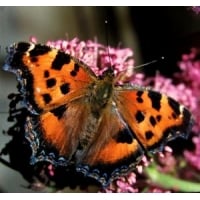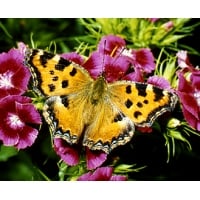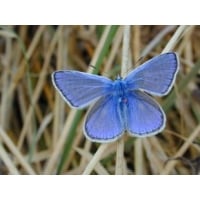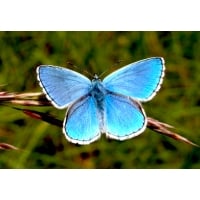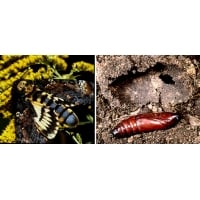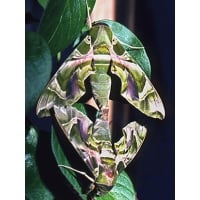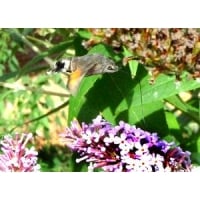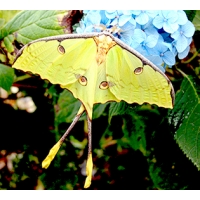SPRING and SUMMER PUPAE You can order these NOW in advance
Glanville Fritillary Melitaea cinxia
The larvae feed on Narrow-leaved Plantain, and live in a cluster until large. These pupae will produce butterflies in a short time.
Glanville Fritillary Melitaea cinxia
The larvae feed on Narrow-leaved Plantain, and live in a cluster until large. These pupae will produce butterflies in a short time.
Yellow-legged Tortoiseshell Nymphalis xanthomelas
A very handsome and richly coloured Large Tortoiseshell which occurs in parts of Europe and in the Far East. It is also reported to have been found breeding in Britain.
The butterfly, caterpillar and pupae are all brighter and grander than polycholoros. HIGHLY RECOMMENDED!
The larvae feed on Willows, Sallows, Elm, and probably many other trees, including those for polychloros.
A few pupae are available immediately. .
Large Tortoiseshell Nymphalis polychloros
One of Europe’s grand butterflies! Now believed to be extinct in Britain.
The larvae feed on a variety of fruit trees, Willow, Sallow, Elms, Aspen, Poplars and Birches. Easy to rear, particularly when sleeved on growing foodplant, but protect from excessive rain. Butterflies are produced this year. They feed on nectar, sap and fruit, then hibernate until they breed in spring.
Could you help establish this extinct British species in your area?
Camberwell Beauty Nymphyalis antiopa
We cannot be sure of obtaining this species every year, and we are lucky to have them again!
Camberwell Beauty larvae feed on Sallow Salix caprea, Willows, Birch and some other trees. The larvae are gregarious nearly until pupation when they are most handsome with long branched spines and wonderful contrasting red blotches on the black ground colour.
In nature the pupae are suspended. In captivity it's wise to do the same. Please see advice on how to suspend pupae in the introduction to Exotic pupae. Keep the pupae moist, by misting with tepid water at least daily. Temperature of 20 deg C or a little more is ideal. Pupae usually hatch in a matter of days if conditions are right.
The Common Blue Polyommatus icarus
This Blue is probably the most wide-spread of all the Blues. The bright sky-blue of the male is familiar to most people. The larvae feed on Birdsfoot Trefoil, Medick, Rest Harrow and other Leguminosae. Larvae are expected in July/August.
The Adonis Blue Lysandra bellargus
The intense blue iridescence of the male is unmatched in Europe. The female has a rich burnt umber colouring. To raise the larvae you need Horseshoe vetch Hippocrepis comosa, a low-growing plant, covered with yellow flowers in May, requiring calcareous soil. The larvae, which will also feed on Coronilla, feed rapidly and pupate among the base of the foodplant. In Britain the Adonis is double brooded, the adults flying in June and August.
Deathshead Hawkmoth Acherontia atropos Pupae
This is a very popular species! There is a shortage of atropos being bred in captivity anywhere, and we are very lucky to have these pupae coming this autumn. Please order early!
Winter pupae can be incubated or kept dormant until the spring. Earlier pupae should be allowed to hatch. In normal summer temperatures the pupal period lasts about a month. Keep the pupae as described for the Pupae Nest on the WWB website.
The larvae feed on many plants in the potato family, Solanaceae, but you don’t have to have these to keep the larvae, they do well on Privet. They have also been found feeding on Buddleia, resulting in a pale coloured larva that matches the leaves. The duration of the egg stage is just a few days, and the larvae grow probably twice as fast as our native hawkmoth larvae, completing their life cycle in as little as 4-6 weeks in summer temperatures.
The moth is just amazing to have alive on your hand! It is furry, and squeaks – almost like handling a little mammal. It also humps its back and displays the blue markings on the body, as well as the famous skull and crossbones on the thorax. The moth needs to feed, not from flowers but from a pad soaked in weak honey or sugar solution. They will seldom feed themselves: it is necessary to hold each moth firmly and, with a strong setting needle, guide the short mouth tube into the sweet feeding pads. They will resist the handling, but once the proboscis samples the sweet solution, they usually coninue feeding of their own accord for some time. The moths may need this assistance repeatedly every few days. Moths have been found inside beehives, attracted by the sweet smell of honey.
In winter moths may be produced before spring if the pupae are kept warm. To overwinter, bury the pupae in light compost that is not too damp but not allowed to dry out. The top of each pupa should be just showing. Store in a cool place (10-12 degrees C) away from predadors. Bring into the warm in April ready for May emergence. When the pupae are to be incubated, keep them warm (20-30 degrees C) and moist, and well drained. The ideal conditions are as described for the Pupae Nest on the WWB website.
Oleander Hawkmoth Daphnis nerii
One of the finest of all Hawkmoths. They can be bred in captivity. The larvae are very fast growing indeed. Most breeders rear the larvae on Privet Ligustrum. The larvae thrive on Periwinkle Vinca, and in the wild they are found on Oleander Nerium.
Pupae can be kept warm (20ºC) and moist to emerge this autumn/winter, or they can be kept cool to emerge and breed in the spring.
To overwinter autumn pupae, bury the pupae in light compost that is not too damp but not allowed to dry out. The top of each pupa should be just showing. Store in a cool place (10-12 degrees C) away from predadors. Bring into the warm in April ready for May emergence.
In the emerging cage, underground pupae need to be in moist compost or kept as described for the Pupae Nest on this website.
Hummingbird Hawk Macroglossum stellatarum
Pupae have only once before been offered by WWB. There are some available NOW. A rare opportunity.
In summer this species migrates to Britain and provide much sought after breeding stock. There are some available NOW.
Pupae will produce adults this year, which hibernate in cold hiding places, but not too cold, because they come from warmer climes.
The larvae grow very fast, feeding on Bedstraw, Woodruff, Goosegrass and Madder.
Pupae are formed in litter on the ground and moths emerge this year.
Watching the moths feeding with amazing agility is a memorable experience!
Don’t miss this opportunity!
Giant Atlas Moth Attacus atlas
Atlas cocoons have become very difficult to obtain, particularly the dormant Thailand race, but we expect to have them again this winter.
The largest moth in the world. Winter cocoons are dormant. You can choose whether to incubate them or keep them cold until the spring. To get them to emerge, raise the temperature to 15 degrees C, and gradually up to 30 degrees C or more, and very humid. They need very warm and humid tropical conditions. When hot, soak the cocoons at least once or twice daily.
It is probably better to keep them cool (8 -12 degrees C) and dormant until mid-April, or even May, then raise the temperature and humidity as described above. They will respond better to summer conditions.
Pairing is achieved in a cage that is ample for the size of the moths but not so large that they can become too separated.
Larvae feed on Privet Ligustrum and are easily reared in warm and moist conditions. Atlas larvae will also feed on Tree of Heaven Ailanthus, Osier Willow Salix viminalis, Citrus and undoubtedly a number of other substitute plants outside their normal habitat.
African Moon Moth Argema mimosae
The moth is a miniature of the Giant Madagascan Moon Moth as a whole lot easier to breed! Spray the cocoons daily, keep at about 25 degrees C, or a little more, and they start to emerge as they do in the rainy season.
Pairings are not automatic but not difficult. The larvae are most spectacular and they thrive on Eucalyptus, which is evergreen and therefore suitable for rearing in summer or winter. Other foodplants recorded: Liquidambar, Walnut, Sumac Rhus sp.


